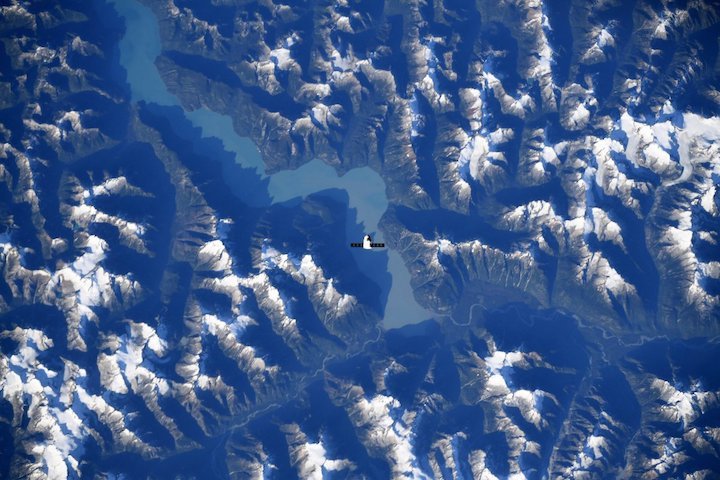28.08.2019

A SpaceX Dragon supply ship departed the International Space Station and returned to Earth Tuesday to conclude its third round-trip flight to the orbiting research outpost, bringing home a spacesuit, mice and and numerous experiments.
The space station’s Canadian-built robotic arm released the automated cargo capsule at 10:59 a.m. EDT (1459 GMT) Tuesday, around two-and-a-half hours after the arm removed the Dragon spacecraft from its berthing port on the research lab’s Harmony module.
The ground-commanded release occurred as the space station sailed more than 250 miles (400 kilometers) over the Pacific Ocean. NASA astronaut Christina Koch monitored the departure.
Three rocket firings by the Dragon spacecraft’s Draco thrusters guided the supply ship away from the station.
“Dragon is outside the approach ellipsoid on a safe 24-hour free-drift trajectory, and with that we are done for your activity related to this. Thank you so much,” spacecraft communicator Travis Fitzgerald radioed the station crew from mission control in Houston.
“We are very appreciative of a successful Dragon mission, and it was our pleasure to participate,” Koch replied. “We were glad to conduct all the excellent science as part of this mission, and we look forward to more in the future.”
The Dragon spacecraft later conducted a nearly 13-minute deorbit burn to slow its velocity and drop out of orbit. Three main parachutes unfurled before the capsule splashed down in the Pacific Ocean around 300 miles (500 kilometers) southwest of Long Beach, California.
A SpaceX recovery team planned to hoist the capsule out of the water and transport it to the Port of Los Angeles, where time-sensitive experiments and hardware will be handed over to NASA and research teams.
The commercial Dragon cargo capsule departed the station with some 3,991 pounds (1,538.5 kilograms) of equipment on-board, according to a NASA spokesperson. Astronauts packed the cargo inside Dragon’s pressurized cabin over the last few weeks.
SpaceX’s 18th operational resupply mission to the space station arrived at the orbiting complex July 27, two days after launch from Cape Canaveral aboard a Falcon 9 rocket. It was the third flight for this particular Dragon spacecraft, which SpaceX previously flew to the station in 2015 and 2017.
The automated Dragon cargo capsule delivered 5,097 pounds (2,312 kilograms) of supplies, equipment and research investigations for the station’s six-person Expedition 60 crew.
The cargo load delivered to the station included a new $22.5 million docking adapter to accommodate arrivals of Boeing and Starliner commercial crew capsules. NASA astronauts Nick Hague and Andrew Morgan helped install the new docking mechanism — the second such adapter on the station — during an Aug. 21 spacewalk.
The station crew stowed an Extravehicular Mobility Unit, or spacesuit, into the Dragon’s internal compartment for return. A fresh spacesuit arrived at the station aboard the spacecraft in late July.
The Dragon also came back to Earth with mice, which scientists sent to the space station to investigate how spaceflight affected the animals’ muscles, bones, immune systems and organs.
SpaceX’s next cargo mission to the space station under a multibillion-dollar contract with NASA is scheduled for launch in December or in early 2020.
Quelle: SN
